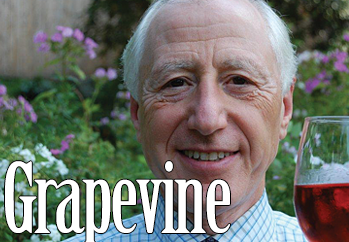The Shape of Things to Come? Champagne Glasses?
Opinion Advocates for ideas and draws conclusions based on the author/producer’s interpretation of facts and data.
 In today’s society of instantaneous social media, opinions take on the specter of fact, facts bear the cloak of someone’s alternative facts and minutiae may grandstand as omnipotent provocation.
In today’s society of instantaneous social media, opinions take on the specter of fact, facts bear the cloak of someone’s alternative facts and minutiae may grandstand as omnipotent provocation.
This week, with my effort firmly focused on fair and balanced reporting, I present the latest controversy, however minor, amongst wine cognoscenti.
The topic? Champagne. However, the focus is upon a seemingly obvious component of enjoying Champagne. What is the proper shape of the glass to be lifted when enjoying Champagne?
As the quality and uniqueness of Champagne was gaining broad popularity in the 18th century, many felt that a distinctive shape was required to capture the essence of this highly touted elixir.
This infatuation with Champagne and a uniquely distinct glass shape became all-important in military circles as well as noble aristocratic courts as a celebratory vessel. Here are two quotes to emphasize its allure and inherent pleasure-giving attributes.
When Napoleon reigned as the emperor of France, he often raised this newly-designated glass shape and quipped, “I drink Champagne when I win, to celebrate; and I drink Champagne when I lose, to console myself.”
Madame Bollinger, head of the eponymous Champagne house after World War II, when asked when she indulged in Champagne, she famously replied, “I only drink champagne when I’m happy, and when I’m sad. Sometimes I drink it when I’m alone. When I have company, I consider it obligatory. I trifle with it if I am not hungry and drink it when I am. Otherwise I never touch it – unless I’m thirsty.”
During this period the popular Champagne vessel of choice was a shallow bowl with a broad diameter. Legend has it that it was shaped to the breast of Marie Antoinette. The concept behind the shape? The relatively large surface area (at the time) caused the unsightly and undesirable foam to dissipate quickly.
When it later became fashionable to delight in the foam and in the countless bubbles that created an atmosphere of celebration, the shape of the glass changed – radically. In the late 19th century, Russian aristocrats commissioned what has become today’s Champagne flute, a narrow, nearly straight-walled, tall glass. The rest of the world began to adopt this shape in the mid to late 20th century. This shape still holds court today as the shape of choice among connoisseurs and cognoscenti.
Why?
The flute shape allows the bottle carbonation to continue in the glass, allowing us the visual pleasure of a continuous stream of bubbles. The narrow top directs the bubbles to the tip of the tongue and the delicate aromas to the nose. These seemingly infinite bubbles carry the aromas of the Champagne. As they rise to the top they burst, releasing the aromas just as they reach our noses, thus influencing our sense of smell. It has been estimated that the minute rough edges inside a fine crystal flute will form as many as 10 million bubbles in a single glass. The logic is simple: more bubbles, more aromatics.
Case closed.
Until recently. A growing number of Champagne lovers and influencers have been favoring a tulip-shaped glass and, in certain instances, a classic white wine glass shape.
Heresy? Is the rationale behind this surge fact or social media hype?
The theory expounded is that the true aromatics of Champagne require a broader surface area than that afforded by the flute. With a broader surface in a tall glass more bubbles will burst, thereby driving more aromatics to the surface of the glass and to our olfactory senses.
My favorite shape for Champagne? I continue to be mesmerized by the narrow channel of effervescence and foam in the flute. I encourage you to experiment on your own. Numerous drinking vessels are available. Engage in side-by-side comparisons. Your self-focus will provide the objective answer for your individual palate. Which is much better than any conflicting information you will encounter on social media.
Nick Antonaccio is a 45-year Pleasantville resident. For over 25 years, he has conducted wine tastings and lectures. Nick is a member and program director of the Wine Media Guild of wine journalists. He also offers personalized wine tastings. Nick’s credo: continuous experimenting results in instinctive behavior. You can reach him at nantonaccio@theexaminernews.com.
